unidentified flying objects (UFOs)

Fig 1. A UFO allegedly captured on video over Derbyshire, England, in 1999.
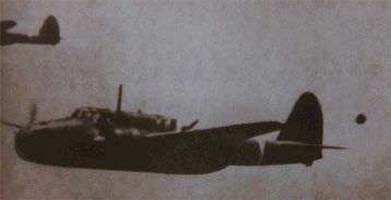
Fig 2. A phenomenon purported to be a foo fighter.

Fig 3. Left to right: Sgt. Lonnie Zamora, Mr. Burns (FBI), Maj. H. Mitchell (AFMDC), Coral Lorenzen of APRO, and Sgt. Castle of the Military Police.
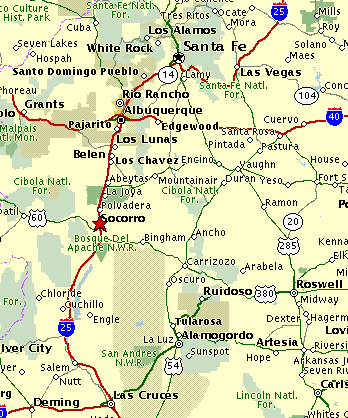
Fig 4. Location of Socorro.
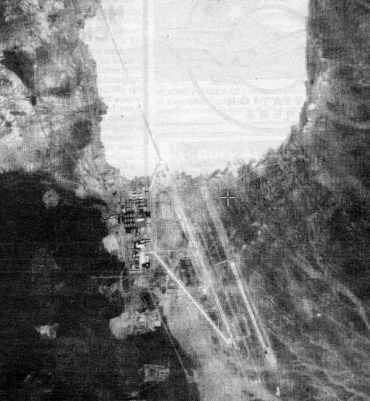
Fig 5. Satellite image of the Groom Lake military installation.
The term UFO dates back only as far as 1952. Mysterious aerial phenomena, however, have been reported on and off for centuries. The notion that unidentified objects or lights in the sky might be craft from other worlds appears to have been first suggested following the earliest wave of such sightings – that of the "mystery airships" – in 1896 and 1897. Perhaps it is no coincidence that this wave came at a time when the American astronomer Percival Lowell was advocating the existence of an advanced race on Mars and there was increasing discussion of the feasibility of heavier-than-air flight.
The modern debate about the nature of UFOs began in 1947 with Kenneth Arnold's sighting of the first so-called flying saucers (see also Cold War, linked to UFO reports). Explanations for the saucers, or "flying disks" as they were also known at the time, included natural phenomena, such as Venus or unusual clouds, illusions, hoaxes, balloons, prototype aircraft and secret weapons (friendly or hostile), and the extraterrestrial hypothesis – the belief that at least some UFOs are extraterrestrial spacecraft.. The last possibility was not initially given much credence but rapidly gained favor as a result of intense media speculation.
From the outset, the systematic investigation of UFOs was made problematic by the fact that the alleged phenomenon was both transient and unpredictable. Although data were plentiful, these largely took the form of individual and uncorroborated eyewitness reports – a notoriously unreliable source of information. Yet enough sightings were made by what appeared to be reliable, experienced observers, including military personnel and police officers, for the phenomenon to be taken seriously (see Roswell incident; Thomas Mantell). The United States military, concerned about a possible threat to national security and following the recommendations of General Twining, launched the first of its investigations, Project Sign. This was followed by Project Grudge and, finally, beginning in 1952, Project Blue Book. J. Allen Hynek, the astronomical consultant for Blue Book devised a classification scheme for UFO reports.
Although military and CIA interest in UFOs declined steeply after the "Washington Invasion" of 1952, public interest was maintained by the increasingly sensational claims of amateur investigators such as Donald Keyhoe and "contactees" such as George Adamski. A large body of saucer mythology began to accrete around claims of government cover-ups and certain improperly explained sightings. Meanwhile, professional scientists continued, with a few notable exceptions such as Donald Menzel, to distance themselves from the subject.1-4
There are many reports of unidentified objects and lights in the sky. The great majority of these can probably be accounted for in terms of (a) hoaxes, (b) misidentifications of mundane natural phenomena (Venus, clouds, etc.) or artificial phenomena (aircraft, satellites, etc.), (c) advanced prototype military planes, and (d) poorly understood natural terrestrial phenomena, such as earthlights or ball lightning. Whether there is a residue of cases that provides evidence of previously unrecognised phenomena remains to be seen.
Technological developments and speculation
Whatever has been the leading-edge technology or scientific speculation of the day has colored how we imagine intelligent extraterrestrials to be. The Victorians began this trend in an age when no scheme, however crazy or ambitious, seemed impossible. A host of engineering marvels and scientific breakthroughs had convinced the public that the potential of technology was almost limitless. Between 1860 and 1900 came the invention of the internal combustion engine and automobile, telephone, electric motor, phonograph, radio, motion pictures, hand-held camera, electric lamp, typewriter, microphone, rigid airship, and electric tram. During the same period, the first skyscrapers were built, the Statue of Liberty and the Eiffel Tower were erected, dynamite came into use, antiseptic surgery and antibiotics were introduced, and X-rays, radioactivity and the electron were discovered. Suddenly it seemed there might be nothing to which humans could not turn their hands and minds. The same capabilities, but to a higher degree, were projected onto other races in space. Thus Martians could not only build canals, they could construct a global network of them and irrigate their entire world by this means.
As radio and telephony became a routine form of communication, so speculation began that beings on other worlds might be trying to send us radio messages. Nor is it coincidental that the first wave of unidentified flying objects, described as "mystery airships," appeared in the skies at the same time as airship technology reached a practical level on Earth. Fifty years later, as the first giant radio telescopes came into use, the talk of the times switched to interstellar communication by powerful, beamed radio waves, while UFOs had made a quantum jump in performance, just as humans had harnessed the jet engine and were learning how to escape the confines of their planet.
Likewise in the realm of spaceflight, on 4 October 1957, the Soviet Union rocked the world, and rocketed out of the world, with the launch of the first Earth-orbiting satellite, Sputnik 1. From now on there would be two races, in arms and in space, which would be intimately linked. American pride and morale demanded a swift reply. It came on 31 January 1958, with the launch by a Jupiter-C booster of the Explorer 1 satellite. Suddenly, the possibility of traveling to the planets and, eventually, even to the stars seemed more real – as, too, did the possibility that other beings might have visited Earth.
People
Adamski, George (1891–1965)
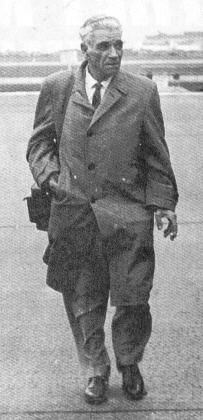 |
George Adamski, or "Professor Adamski" as he was known to his acolytes, was a worker at a hamburger stand on the southern slope of Mount Palomar (home to what was then the world's largest optical telescope), who claimed to have made contact with flying saucers and their occupants. In his best-selling books, Flying Saucers Have Landed (1953) and Inside the Spaceships (1955), he wrote about encounters in the desert nearby with telepathic Venusians. The aliens were here because they were concerned about radiation from atomic explosions, too much of which, they said, would destroy the Earth.
Such outlandish tales, though compelling to a lay-readership keen for what seemed like inside information about UFOs and sensitized to the issue of atomic weapons, helped further discourage scientists from becoming involved with the UFO controversy. As the historian Steven Dick has pointed out: "Scientists seemed as unwilling to distinguish a potentially credible UFO phenomenon from Adamski's claims as the public was to separate scientific belief in extraterrestrials from UFOs." (See ref. below.) The increasing vacuum left by science was filled by a variety of individuals and largely amateur organizations who investigated UFOs from the standpoint of favoring the extraterrestrial hypothesis. These included Donald Keyhoe, the Aerial Phenomena Research Organization, and the National Investigations Committee on Aerial Phenomena.
The success of Adamski's books also suggests that many people at this time were prepared to entertain the idea that UFOs might have come from other planets within the solar system – an indication of the gulf that had opened up between modern astronomical knowledge and some of the quainter, folk notions of space. An interstellar origin for putative extraterrestrial spacecraft was at least scientifically feasible. But it had been widely recognized by astronomers since the turn of the century that, in the search for intelligence elsewhere, Earth's immediate neighbors looked decidedly unpromising.
Reference
1. Dick, Steven J. The Biological Universe: The Twentieth-Century Extraterrestrial Life Debate and the Limits of Science. Cambridge, England: Cambridge University Press (1996).
Condon, Edward Uhler (1902–1974)
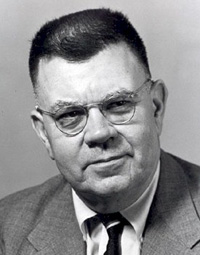 |
Edward Condon was a Princeton physicist and past Director of the National Bureau of Standards, who chaired the committee, set up at the request of the US Air Force in 1966, to assess the evidence on unidentified flying objects gathered by Project Blue Book.
Reference
1. Condon, Edward U. Scientific Study of Unidentified Flying Objects. E. P. Dutton & Co., N.Y. and Colorado Associated University Press (1969).
Hynek, J. Allen (1910–1986)
Keyhoe, Donald E. (1897–1988)
Donald Keyhow was a retired Marine Corps major and pilot, turned freelance writer, who became interested in the phenomenon of unidentified flying objects in 1949 following a meeting with Ken Purdy, the editor of True magazine, and a proponent of the extraterrestrial hypothesis. Keyhoe became convinced that UFOs were alien spacecraft and that the government was hiding this fact from the public to avoid mass panic. He set forth his conspiracy theory in an article, "The Flying Saucers are Real," in True's January 1950 issue, then in a book of the same name published later that year.1 His claims, although unsupported by scientific evidence or named sources, attracted much popular interest and were given a boost by the wave of UFO sightings in the early 1950s and the instigation of Project Blue Book. In 1957, Keyhoe became director of a UFO club known as the National Investigations Committee on Aerial Phenomena.
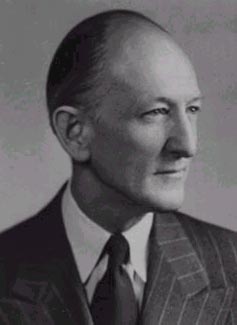 |
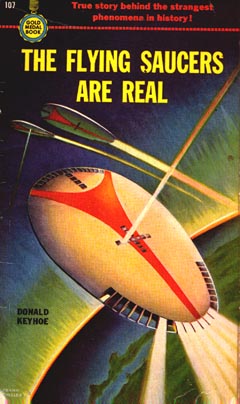 |
Reference
1. Keyhoe, Donald. The Flying Saucers Are Real. New York: Fawcett (1950).
Klass, Philip J. (1920–2005)
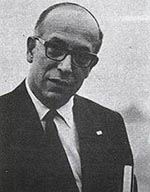 |
Philip Klass was an American aviation journalist who, in the 1970s, became the foremost critic of ufology, taking over that mantle from Donald Menzel.1 Klass was born in Des Moines and raised in Cedar Rapids, Iowa. After graduating from Iowa State University, he worked for a decade at General Electric as an electrical engineer. He joined Aviation Week in 1952 and later wrote extensively about surveillance satellites for that publication. He was a fellow of the Institute of Electrical and Electronics Engineers and a founder of the Committee for the Scientific Investigation of Claims of the Paranormal (CSICOP).
Klass's first UFO investigation, in 1966, was of the Socorro Incident, a sighting reported two years earlier in New Mexico. He concluded that it had been a hoax perpetrated in an attempt to bring tourism to the economically depressed town. Klass went on to write seven books, including the well-regarded UFOs Explained (1975). He was interviewed on news broadcasts that included the "CBS Evening News" and for TV programs devoted to space phenomena. Klass was reviled as a "disinformer" by ufologists, particularly those who insisted they had been abducted for scientific testing.
Reference
1. Klass, Philip. UFOs Explained. New York: Vintage (1974).
Mantell, Captain Thomas Francis Jr. (1922–1948)
McDonald, James E. (1920–1971)
James McDonald was an atmospheric physicist at the University of Arizona, Tucson, and one of the few prominent scientists openly to support the extraterrestrial hypothesis of unidentified flying objects in the 1960s. He became closely involved with the subject in 1966 following a number of sightings in that year, including one over Tucson, and a visit to Hynek and others involved with Project Blue Book. A lecture he delivered in Washington, DC, in which he argued that UFOs were "the greatest scientific problem of our times," received widespread media coverage. He was particularly scathing of the Condon Report, considering it "seriously deficient" and its conclusions "almost incredible." In 1971, together with Gordon Thayer, he presented details of two case studies which he considered completely unresolved. On 13 June 1971, he was found to have committed suicide in the desert near Tucson.
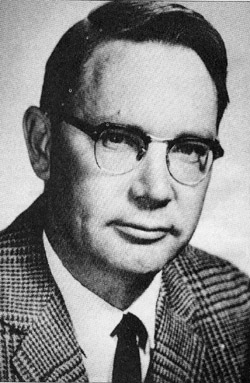 |
Ruppelt, Edward J. (1922–1960)
Captain Edward J. Ruppelt was head of the United States Air Force's investigation into unidentified flying objects from 1951 to 1953. Upon taking charge of Project Blue Book in 1952, he insisted upon the use of the term "unidentified flying object" instead of "flying saucer" and introduced more rigorous procedures for reporting and analyzing information on sightings. His experiences are related in his 1956 book Report on Unidentified Flying Objects.1
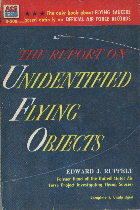 |
Reference
1. Ruppelt, Edward. The Report on Unidentified Flying Objects. New York: Doubleday (1956).
Twining, General Nathan Farragut (1897–1982)
Vallée, Jacques Fabrice (1939–)
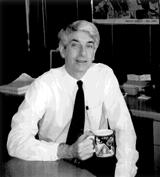 |
Jacques Vallée is a French-born American computer scientist who has made a study of ancient folklore and religious belief systems in the context of twentieth century UFO reports. He claims that contemporary accounts of UFOs and their occupants are merely a modern variant of a complex of experiences that infuse the folk memories of all cultures. A similar conclusion was reached by Carl Jung.
The character played by François Truffaut in the 1977 film Close Encounters of the Third Kind is based on Vallée.
Famous incidents
foo fighters
'Foo fighters' (Figure 2) were mysterious aerial lights seen by aircrew on both sides in World War II, especially after 1943, and during the Korean War. Their name derives from the cartoon character Smokey Stover, whose catchphrase was: "Where there's foo there's fire." Many reports were made of balls of light, varying in color and in size from several centimeters to about 2 m across, moving in close pursuit of warplanes. A common assumption among Allied pilots was that they were some form of enemy invention such as reconnaissance drones. However, when enemy aircrew were interrogated, it became clear that both German and Japanese fliers had encountered the same phenomenon. As the minutes of the Scientific Advisory Panel on Unidentified Flying Objects in 1953 noted, "[T]heir exact cause or nature was never defined." The minutes also reveal that both the panel's chairman, H. P. Robertson of the California Institute of Technology, and another panel member, Luis W. Alvarez of the University of California:
... had been concerned in the investigation of these phenomena, but David T. Griggs (professor of geophysics at the University of California at Los Angeles) is believed to be the most knowledgeable person on this subject. It was their feeling that these phenomena are not beyond the domain of present ... physical science.
The same view was later espoused by Donald Menzel and Ernest H. Taves,1, 2 who suggested that foo fighters were light reflections from tiny ice crystals formed by supercold air eddying around battle damage on the aircraft. Another possibility is that they were akin to ball lightning. The significant point is that, like the "Los Angeles Air Raid" and Kenneth Arnold's sighting, foo fighters were not considered as an aspect of a single phenomenon until hindsight included them in the UFO canon. As the Robertson Panel in 1953 concluded, "If the term 'flying saucers' had been popular in 1943–1945, these objects would have been so labeled."
References
1. Menzel, Donald H., and Taves, Ernest H. The UFO Enigma. New
York: Doubleday (1977).
2. Menzel, Donald H., and Boyd, Lyle B. The World of Flying Saucers:
A Scientific Examination of a Major Myth of the Space Age. New York:
Doubleday (1963).
Los Angeles Air Raid
The so-called "Los Angeles Air Raid" was the first incident involving unidentified aerial phenomena to spark a government investigation. Various radio reports and visual sightings of luminous objects in the sky over the Los Angeles area, on the night of 24–25 February 1942, culminated in the firing of 1,430 anti-aircraft shells. Although the incident has never been conclusively explained, it seems reasonable to assume that "war jitters" may have been at least partly to blame. Only two days earlier, a Japanese submarine had surfaced north of Santa Barbara and shelled fuel storage tanks for 20 min, while on the same evening President F. D. Roosevelt made a nationwide broadcast warning that nowhere in the United States was safe from enemy action.
Lubbock Lights
The Lubbock Lights is one of the classic early cases of UFO sightings which received nationwide publicity despite the fact that the mystery was quickly solved – by the very people who first reported it. One night in August 1951, three faculty members of Texas Tech University were watching the sky together and trying to count meteors. Suddenly, they saw 15 to 20 faint, yellowish-white lights moving from north to south. An hour later the spectacle was repeated, and again after another hour. The three scientists estimated the lights to be moving at a height of about 50,000 ft and a speed of about 5 miles per second. Following a call to the Lubbock Evening Avalanche, the story snowballed. However, the three witnesses delved further into the incident and uncovered its true cause – birds. The lights turned out to be nothing more than flocks of migrating plover, reflecting the glow from newly-installed mercury-vapor street lamps. The fact that three professional scientists had so badly misjudged the scale of the phenomenon underscores the difficulties people face in gauging the height and speed of unidentified objects in the sky.
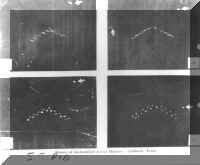 |
Roswell incident
Socorro Incident
The Socorro incident is one of the most frequently recounted UFO events, since it involved a police witness and heralded the start of the great wave of flying saucer reports of the mid-1960s (Figures 3 and 4).
At about 5.45 pm, on 24 April 1964, patrolman Sgt. Lonnie Zamora was in pursuit of a speeding motorist south of Socorro, New Mexico, when he heard a brief roar and saw a "flame in the sky" over a mesa less than a mile away. A shack containing dynamite was nearby and, at first, Zamora thought that this had blown up. Abandoning his chase, he drove up a steep road to the mesa top, from which he observed "a shiny object to [the] south" 90 to 180 m (300 to 600 ft) away, below him in a gully. "It looked," Zamora told an FBI agent later that day, "like a car turned upside down." Next to the object were "two people in white coveralls." They seemed "normal in shape – but possibly they were small adults or large kids." Zamora approached to within 30 meters of the object and saw that it was smooth and oval, with red insignia on its side, and standing on girder-like legs. Then the roar began again, rising in pitch and growing "very loud." Finally, the UFO moved away in a south-westerly direction "possibly 10 to 15 feet above the ground, and it cleared the dynamite shack by about 3 feet." Two other police officers and the FBI agent arrived on the scene shortly after and found four burn marks, and four V-shaped depressions, 25 to 50 miliimeters (1 to 2 inches) deep and roughly 50 centimeters (18 inches) long. In his interview with Zamora, chief Air Force consultant J. Allen Hynek found him "basically sincere, honest, and reliable."
Project Blue Book finally classified the sighting as an "unknown" and the incident remains unexplained, although its authenticity can be challenged on the grounds that there was only one witness and that a couple in their home only 300 meters (1,000 feet) away from the supposed landing site, saw and heard nothing. Aviation expert and UFO Attention has also been drawn to the fact that the landing site happened to be owned by the town's major who therefore had a vested interest in attracting tourism to the spot. On the other hand, the incident did have an interesting postscript. At about 3.00 am on 26 April – two days after the Socorro event – a UFO, identical to that seen by Zamora was reported to have landed some 300 km (about 200 miles) north of Socorro at La Madera, New Mexico. The eye-witnesses to this second event, Orlando Gallego and his family, denied all knowledge of Zamora's sighting. Police reportedly found evidence of burning around the site, and four dents in the ground.
Socorro lies in the Rio Grande Valley at an elevation of 1,396 meters (4,579 feet). It is 141 mi west and north of Roswell, the scene of another famous UFO sighting, 97 mi northwest of Alamogordo (where the first atomic bomb detonation took place in 1945), and 130 miles of south of Los Alamos (the site of a major nuclear research facility). The actress Jodie Foster stayed in Socorro while filming the movie Contact at the Very Large Array 50 miles west of the city.
Washington Invasion
The 'Washington Invasion' was a series of incidents in the latter part of July 1952, centered on Washington, DC, which came at the peak of a major flying saucer flap that year. Events began in the early hours of 20 July when two radars covering the capital picked up eight UFOs in restricted air space, flying at a few hundred kilometers per hour and suddenly accelerating to a tremendous speed. A number of military and civilian pilots reported seeing strange lights in the sky around the same time.
On the night of 26–27 July, more strange lights and radar contacts were logged. Interceptor planes from Wilmington, Delaware were scrambled. One pilot, Lt. William Patterson, reported himself surrounded by a ring of great blue-white lights, which disappeared before he was given permission to fire on them.
In its investigation of the incidents, the Civil Aviation Authority's Technical Development and Evaluation Center concluded that the radar images were the result of temperature inversions which could cause radar signals to be reflected back to the ground. Excitement caused by the radar anomalies could have led to misidentification of ordinary, bright sources of light with mysterious aerial objects.
Related topics
Air Materiel Comman
Air Material Command (AMC) was that section of the US Army Air Forces (later the US Air Force), based at Wright Field (now Wright-Patterson AFB), within which operated the Technical Intelligence Division during the height of military interest in "flying disks" in the late 1940s and early 1950s.
What is today known as the Air Force Materiel Command traces its heritage to 1917 when the Equipment Division of the US Army Signal Corps established a headquarters for its new Airplane Engineering Department at McCook Field, Dayton, Ohio, a World War I experimental engineering facility.
The functions of research and development and logistics were operated separately during World War II until they were reunited for several years in the late 1940s under Air Materiel Command. Then, in 1950, research and development were split off into a separate organization, the Air Research and Development Command.
In 1961, Air Materiel Command became the Air Force Logistics Command, while the Air Research and Development Command gained responsibility for weapon system acquisition and was renamed the Air Force Systems Command. On 1 July 1992, the Air Force Logistics Command and Air Force Systems Command were reintegrated to form the new Air Force Materiel Command.
Technical Intelligence Division
Technical Intelligence Division (TID) was the group within Air Material Command, based at Wright Field (now Wright-Patterson Air Force Base), to which all reports of unidentified aerial activity were forwarded following a serious of sightings by personnel at Muroc Field (now Edwards Air Force Base) on 8 July 1947. That same month, two TID officers visited Kenneth Arnold and concluded "if Mr. Arnold could write a report of such a character and did not see the objects he was in the wrong business and should be engaged in writing Buck Rogers fiction." As the saucer flap of 1947 gathered momentum, staff at TID began to speculate on the origin of what were then commonly called "flying disks". One faction put forward the extraterrestrial hypothesis, although the consensus quickly emerged that advanced Soviet aircraft, possibly based on Nazi designs, were to blame.
The TID was later renamed Air Technical Intelligence Center and was given responsible for Project Grudge and, in its early stages, Project Blue Book. Later still, it was renamed again the Aerospace Technical Intelligence Center. Blue Book eventually became the responsibility of the USAF's Foreign Technology Division as part of a general reorganization.
Area 51
Area 51 is the popular name of a secret US Air Force installation (37° 14.6' N, 115° 47.61' W, elevation 4,383 feet) on the edge of Groom Lake, about 145 kilometers north of Las Vegas, Nevada (Figure 5).
Existence of the base is not publicly acknowledged for security reasons and civilian maps of the region carry no mention of it, only a travel restriction warning. Eyewitness reports from individuals living near the compound testify to unusual aerial activity, including strange craft flying over the mountains and unexplained lights in the night sky. Such sightings are hardly surprising considering that the US Air Force has for many years test flown some of its most covert vehicles there, including the U-2 spy plane, the B-2 Stealth bomber, and the SR-71 Blackbird. When objects as commonplace as Venus or lozenge-shaped clouds can be taken for unidentified flying objects, it should raise few eyebrows that new aircraft with strange appearance, unfamiliar lighting, and extraordinary performance capabilities might be similarly misinterpreted. Some of the latest piloted military hardware can fly at speeds and in ways comparable to those claimed, in early flying saucer books and films, for alien spacecraft in Earth's atmosphere. There are now something like genuine, intelligently-directed UFOs on this planet – and they are human-built. Yet despite the obvious possibilities for misidentification of secret planes with flying saucers, there are those who insist that the Air Force is doing more in the wilderness of the Nevada desert than test-flying the latest high-performance jets.
The claim from some ufologists is that Area 51 also serves as a facility for examining captured extraterrestrial craft and alien corpses. This view was popularized in the film Independence Day, the producers of which were requested by the government to take out all references to Area 51. When they refused, the government withdrew its offer to assist with the movie. Such secrecy naturally serves to stoke the fires of speculation. There are obvious reasons for the Department of Defense to keep the Nevada installation out of the public eye if some of the most advanced military hardware in the world is being put through its paces there. On the other hand, the heavy blanket of security enveloping the base allows those who want to put forward more extreme views can do so, safe in the knowledge that it is just about impossible for them to be proved wrong.
Blue Book, Project
Cascades
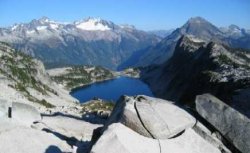 |
The Cascades are a range of mountains extending over 1,120 kilometers (700 miles) in the northwest United States from northern California, through Oregon and Washington to British Columbia. Its highest peaks are Mount Rainier (4,392 meters, 14,409 feet), Mount Adams (3,742 meters, 12,277 feet), Mount Baker (3,285 meters, 10,777 feet), and Mount Hood (3,424 meters, 11,233 feet). The region is tectonically active – a fact spectacularly demonstrated by the 1980 eruption of Mount St Helens – and riven by faults.
The phenomenon known as earthlights, believed to be associated with faults, has been seen close to the location where Kenneth Arnold reported the first "flying saucers" in 1947, suggesting a possible link.
Cold War, linked to UFO reports
Condon Report
The Condon Report was a final 1,465-page document arising from the study headed by Edward Condon into the phenomenon of unidentified flying objects based primarily on data collected by Project Blue Book. It was delivered to the US Air Force in November 1968 and released in Jauaryn 1969. In it, Condon wrote:
Our general conclusion is that nothing has come from the study of UFOs in the past 21 years that has added to scientific knowledge. Careful consideration of the record as it is available to us leads us to conclude that further extensive study of UFOs probably cannot be justified ...
The Report attracted widespread criticism, not least from some parts of the scientific community, which felt that, whether or not the extraterrestrial hypothesis was valid, the Condon study had been too quick to dismiss certain well-documented UFO cases for which there was no obvious explanation. The American Institute for Aeronautics and Astronautics (AIAA) had formed a subcommittee on UFOs in 1967 which, following the release of the Condon Report, issued its first public statement:
The Committee has made a careful examination of the present state of the UFO issue and has concluded that the controversy cannot be resolved without further study in a quantitative scientific manner and that it deserves the attention of the engineering and scientific community.
In December 1969, at its annual meeting in Boston, the American Association for the Advancement of Science (AAAS) held a symposium, organized by a committee including Carl Sagan, Philip Morrison, and Thornton Page, to allow a more open and thorough airing of scientific views than it was felt the Condon report had achieved.
Extraterrestrial hypothesis
The extraterrestrial hypothesis is the belief that at least some unidentified flying objects are extraterrestrial spacecraft. It was first expressed following the 1896-97 wave of "mystery airships", which itself followed quickly on the heels of Percival Lowell's claims about an advanced civilization on Mars. Although secret experimental aircraft controlled by individuals or governments was the most popular explanation, the idea that the "airships" came from beyond the Earth was not without its supporters. The extraterrestrial hypothesis became more popular and sustained, however, following the UFO wave which began with Kenneth Arnold's sighting of "flying saucers" in 1947. In both cases, the extraterrestrial explanation was not immediately sought by the public but was encouraged by speculation in the media.
 |
False memory syndrome
False memory syndrome is the recollection of seemingly real events, often under therapy, that never in fact happened. In the1980s, following an explosion in reported cases of alien abduction and childhood abuse, most notably in the United States, psychologists began to investigate possible neurological sources of the many claims. A consensus has since emerged that human memory is surprisingly prone to confusing whether an event actually occurred or whether the individual merely heard about it. In particular, psychologists have found that it easy under laboratory conditions to induce people to remember events that never actually took place. In one study, Stephen Ceci of Cornell University and his colleagues asked young children whether each of five events had ever happened to them. Four of the events were real, and the fifth was fictitious – getting their finger caught in a mousetrap and having to go to hospital. Almost all the children correctly remembered the true events, but more than a third also gradually became convinced that the mousetrap incident was also real. By the final week, some children "remembered" elaborate details and continued to insist they were true even after their parents and researchers told them otherwise. Taken together, such laboratory studies strongly suggest that false memories, including many reported recollections of alien abduction, can be planted inadvertently by therapists.
First contact
Flying saucer
Grudge, Project
Life article on UFOs (1952)
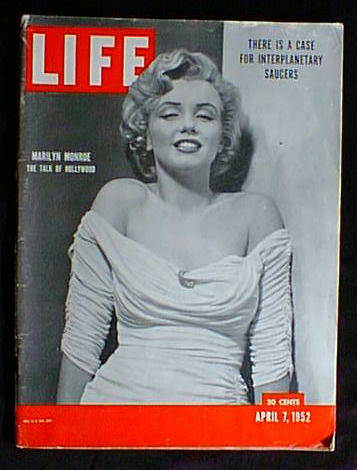 |
The Life article on UFOs was one of the most influential pieces of journalism in the early history of unidentified flying objects. It appeared in the 7 April 1952 issue of Life magazine, just four days after the US Air Force had issued a press release to announce that it would continue studying UFOs through the successor to Project Grudge, known as Project Blue Book. Under the title "Have we visitors from outer space?" the article cited an unnamed general in the Pentagon who "strongly believed flying saucers were interplanetary spaceships". In his memoirs, Captain Edward Ruppelt, head of Blue Book at this time, asserted that a number of USAF generals who privately endorsed the extraterrestrial hypothesis had unofficially encouraged Life reporters to promote the 'interplanetary aspect' and that these officers ranked "so high that their personal opinion was almost policy".1 The article in Life, together with scores of others it spawned in newspapers around the country, may have been an important factor behind the increased rate of reports at this time. In his book Watch the Skies!2 (1995) Curtiss Peebles describes the kind of feedback effect that may have been at work:
Life said the Air Force was interested in flying saucers. People would then be more likely to report a sighting. The new regulations meant that reports that might have been ignored or thrown away before were now sent to Blue Book. The open press policy meant that questions were not brushed off as before. This, along with the increased number of reports, resulted in more newspaper articles which caused people to watch the skies.
Public interest in UFOs peaked later that year following the "Washington Invasion".
Marfa Lights
Mogul, Project
NICAP
National Investigations Committee on Aerial Phenomena (NICAP) was an amateur UFO club, formed in 1956 in Washington, DC. In January 1957, it came under the directorship of retired major and flying saucer enthusiast, Donald Keyhoe. NICAP achieved an unwarranted measure of prestige and credibility through its governing board of retired admirals, generals and academics, enticed by Keyhoe to posts which were little more than sinecures. In reality, NICAP acted primarily as a vehicle for Keyhoe to promote the extraterrestrial hypothesis and press his claim that the US Air Force and CIA were concealing information on alien spacecraft and their occupants.
paleocontact hypothesis
Scientific Advisory Panel on Unidentified Flying Objects
The Scientific Advisory Panel on Unidentified Flying Objects was a panel of scientific experts set up, following a CIA proposal to the Intelligence Advisory Committee on 4 December 1952, to review the issue of unidentified flying objects and assess any possible threat to national security. The CIA's proposal was in response to a 24 September memo from the Assistant Director for Scientific Intelligence, H. Marshall Chadwell, to the CIA's Director, General Walter Bedell Smith. Chadell expressed concern that the Soviets might be able to orchestrate a flying saucer flap in order to confuse the US Air Warning System and thus camouflage a surprise attack given that "a fair share of our population is mentally conditioned to the acceptance of the incredible." In the wake of the CIA's response, Chadwell asked H. P. Robertson, a specialist in cosmology and relativity theory at the California Institute of Technology, to assemble a suitable group of consultants. To this end, Robertson brought together physicists Luis Alvarez and Samuel Goudsmit, geophysicist Lloyd Berkner, and astronomer Thornton Page, together with associate panel members J. Allen Hynek and rocketry expert Frederick Durant. From 14 to 17 January 1953, in Washington, DC, the scientists met in secret to consider the evidence. They concluded that "reasonable explanations could be suggested for most sightings" but that "the continued emphasis of the reporting of these phenomena does, in these parlous times, result in a threat to the orderly functioning of the protective organs of the body politic." The Panel recommended that the national security agencies adopt a program
... to reassure the public of the total lack of evidence of inimical forces behind the phenomena, to train personnel to recognize and reject false indications quickly and effectively, and to strengthen regular channels for the evaluation of and prompt rejection to true indications of hostile measures.
The fact that the CIA did not declassify the whole of the Panel's report until 1979, and that the Panel advocated a debunking education program, was later seized upon by some ufologists as more evidence of a cover-up. But there were good reasons for these actions. The CIA would not have wanted, by revealing its involvement with the Panel at the time, to give further ammunition to those, such as Donald Keyhoe, who in the early 1950s were energetically promulgating the theory of an extraterrestrial conspiracy. More importantly, the CIA would have been keen not to hand the idea of spreading UFO hysteria among the American populace to the Soviets, given that the enemy might not in fact have thought of it. As for the Panel's recommendations for greater openness and a more analytical approach to handling UFO reports, these were nothing more than one would expect from a team of professional scientists.1
Reference
1. Durant, F. C. Report on Meetings of Scientific Advisory Panel on Unidentified Flying Objects. Washington, D.C.: CIA (1953).
Sign, Project
Skyhook, Project
Twinkle, Project
See also:
• extraterrestrial
intelligence, implications following first contact
• science fiction involving extraterrestrials,
after 1940
• science
fiction involving extraterrestrials, in films and television
• SETA
Distinct from ufology is a branch of SETI (Search for Extraterrestrial Intelligence) known as SETV (Search for Extraterrestrial Visitation), which is largely focused on theory and observation connected with the possibility of extraterrestrial probes within the Solar System. Unfortunately, a perceived connection between this field and UFO lore has tended to make orthodox SETI researchers shy away from involvement in local searches for ETI. However, there are signs that this unjustified discrimination is slowly coming to an end.
References
1. Catoe, Lynn E. UFOs and Related Subjects: An Annotated Bibliography. Washington, D.C.: U.S. Government Printing Office (1969).
2. Henry, Richard C. "UFOs and NASA," Journal of Scientific Exploration, 2, No. 2, 93–142 (1988).
Abstract: In 1977 President Carter's Science Advisor recommended that a small panel of inquiry be formed by NASA to see if there had been any new significant findings on UFOs since the US Air Force- sponsored investigation of UFOs ("Condon Report") a decade later. Five months later, NASA responded to that recommendation by proposing "to take no steps to establish a research activity in this area or to convene a symposium on the subject." This article offers a partial inside look at how that decision was made at NASA.
3. Sagan, Carl, and Page, Thornton, eds. UFOs: A Scientific Debate. New York: Norton (1974).
4. Sturrock, Peter, A. "Report on a Survey of the Membership of the American Astronomical Society Concerning the UFO Problem," Journal of Scientific Exploration, 8, No. 1;2;3, pp. 1–45;153-195;309–346 (1994).
Abstract: Refereed journals, to which scientists turn for their reliable information, carry virtually no information on the UFO problem. Does this imply that scientists have no views and no thoughts on the subject, or that all scientists consider it insignificant? Does it imply that scientists have no reports to submit comparable with UFO reports published in newspapers and popular books? The purpose of this survey was to answer these questions. Note: Sections 1–3 and the Appendices were published in Vol. 8, No. 1 of the Journal of Scientific Exploration. Section 4.1–4.3 appeared in Vol. 8, No. 2, and Section 4.4–4.9 was published in Vol. 8 No. 3.


